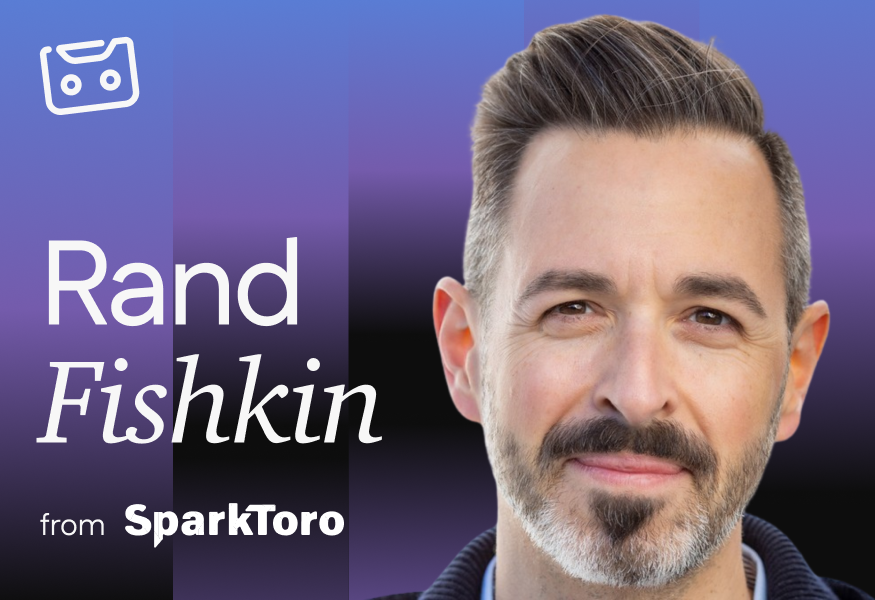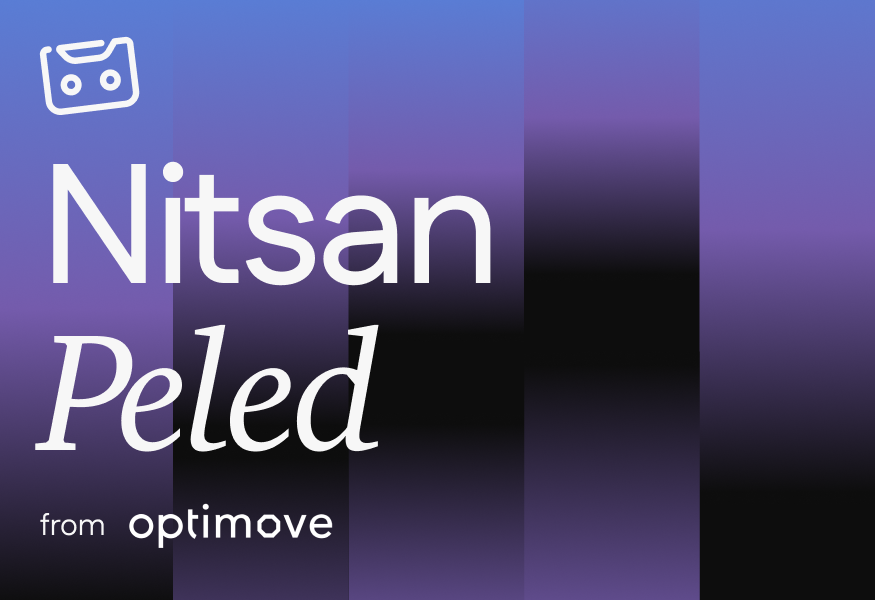Gaetano DiNardo is one such person. He’s not one for gimmicks or vanity metrics. He’s about results—figuring out what works and getting the most out of it.
It’s what makes him the perfect person to head up growth at communications platform Nextiva. And it’s what made him a brilliant guest on Maker Mixtapes.
In this post, we’ll dissect the key takeaways from episode five of the podcast, covering Gaetano’s thoughts on demand generation, content strategy, community building, and marketing sprints as an alternative to bloated quarterly plans.
Great demand generation means lead quality
If you're a new startup developing a demand generation strategy from info found on Google, it can be easy to fall down a rabbit hole of sales funnels, marketing qualified leads, automated content, and metrics that track every aspect of a person’s interaction with your brand.
Things can get complex and overwhelming in a hurry. For Gaetano, all of those bells and whistles aren’t necessary:
“To me, great demand generation is lead quality. And the way you go about doing that is just, you really dominate your niche with great education and great content all the time.”
But he’s keen to point out that great content alone isn’t a guarantee that customers will choose you over the competition. It’s important to be prominent on channels where you’re directly up against competitors:
“You have to be well represented on all of the review sites.
“Shoppers are going to come to you last. They’re going to go to peers and other review sites first.
“Think about where your competitors are being talked about and make sure you’re also part of those conversations.”
Focus your content strategy on what customers want
Before you publish any piece of content, it’s a good idea to ask yourself: “Am I solving problems for my target audience, or am I simply adding to the noise?”
Nextiva only produces content that’s a) based on topics with keyword search volume and b) “educates the market on problems that the target audience is having, which could eventually lead to a sale of the product.”
“If it doesn’t have a keyword orientated opportunity around it, we pretty much don’t publish it.”
Those are solid foundations for any content marketing team to work from. But who’s to say your competition isn’t taking the same approach? Therefore, it’s important to analyse your competitors. What can you do better? What can you do that they’re not doing?
For Gaetano and his team, they’re able to stand out with video:
“No one does video well in our industry [so] we’ve kind of gone all-in on YouTube SEO, and it’s been great.”
Each video the team produces has a corresponding blog post, where those videos are embedded to increase reach. These articles are then linked to via YouTube video descriptions, allowing viewers to read more about the topic.
And they don’t stop there. Videos are also repurposed for organic social, paid ads and YouTube pre-roll.
The result?
“We've started to see that videos and articles are a double occupying SERP real estate for us, which is great.”
For every piece of content you produce, look at ways it can be repurposed for different channels. In Nextiva’s case, a blog post has been repurposed as a video. For you, it could be a tweetstorm, a podcast, or an infographic.
If you’re going to invest time in creating the best possible piece of content, it makes sense to spend a bit longer to maximize its potential.
Not all content needs a rigorous promotional strategy
There are multiple tactics for content distribution. Social media, email, paid ads, and influencer marketing are some of the most popular.
One tactic that never appears on lists of ‘top distribution channels’ is "silent distribution." But it’s an approach that Nextiva uses often, which might work for your brand if the content you produce isn’t ‘sexy’.
“The majority of stuff that we produce is not very sexy. And therefore, we just go with the mindset of, ‘alright, this is going to be silent traffic that, you know, gets found by people who need it in search.’ And that's pretty much it.”
It couldn’t be simpler. If the content is good, hits the right keywords, and solves your audience's problems, the buyers who need it now will find it. When they do, you can measure engagement to measure its effectiveness.
For Gaetano, this involves looking at the average time on page and whether readers engage with more content. He doesn’t worry too much about a blog post driving sales:
“When have you ever read a blog article and bought something? Probably never.”
Nextiva focuses on creating landing pages and affiliate pages that convert, allowing blog posts to do what blog posts do best: educate the market, draw attention, and grab mindshare.
If it doesn’t exist, build it
When great minds are connected, big ideas come to life. It’s why platforms like Slack, Trello, and Microsoft Teams are so popular with remote teams and communities. In Gaetano’s case —as a musician who works in tech—there was no one place to connect and share ideas. So, he created one:
“There are a lot of musicians, like myself, out there who work in tech. And they view music production and having music as an escape route. Whether you play guitar, whether you make beats, whether you write songs, there's actually a tonne of people out there who do this [too] and you wouldn't know it.
“And so the goal was really just creating this so that I could do something different and then unite people that have this in common.”
Musicians in Tech is now a growing community that bridges the gap between the music business and the tech industry, connecting business leaders and musicians worldwide via a newsletter and podcast.
Whether it’s for work, passion, or both, find your community. If it doesn’t exist, maybe you’re the person to change that.
Marketing is a marathon; execution is a sprint
Planning is a critical part of any marketing strategy. You need to know what you’re doing, when and why. How far should you plan ahead—three months, six months, a year?
Sitting down this time last year, would you have predicted that Fleets, TikTok, and Clubhouse would have been popular channels to target?
Because things evolve so quickly, Nextiva opts for a different approach to executing new ideas by way of marketing sprints:
“We don’t do quarterly planning or six months planning. It’s just too difficult. Too much is changing too fast.
“And so we started operating on a bi-weekly sprint, where the first Monday we go through what all the big opportunities are. We reshuffle the deck and then we say, ‘in two weeks' time, here's what each person is committed to.’ We have a check-in at the midway point and then we have a sprint review at the end.
“It's just a more agile and, I feel, flexible and productive way to work as a remote marketing team.”
It’s a simple idea. And one that fits perfectly with the current marketing landscape.
So why bi-weekly and not one week or one month?
“What we found with a week is that [stuff] gets held up. [Things] will get caught up in design, it'll get stuck in dev, it'll get stuck in QA. Writers will get behind on their stuff, editorial will take longer than we anticipated, something big will come up that we have to shift our attention to.
“So we found that [with] a week we left ourselves scrambling a little bit. But two weeks was the sweet spot.”
If you plan to follow current trends and target emerging platforms, opting for marketing sprints over traditional longer-term planning may be the way forward.
Meet the makers
Maker Mixtapes is a podcast about the entrepreneurs, creators, and marketers building impressive things in their field. From content marketing to YouTube and growth, agency life to e-commerce and SaaS, this podcast aims to dissect and share lessons from their success.
Listen to Gaetano and other episodes from the brightest minds in tech and business on Spotify or Apple Podcasts.












